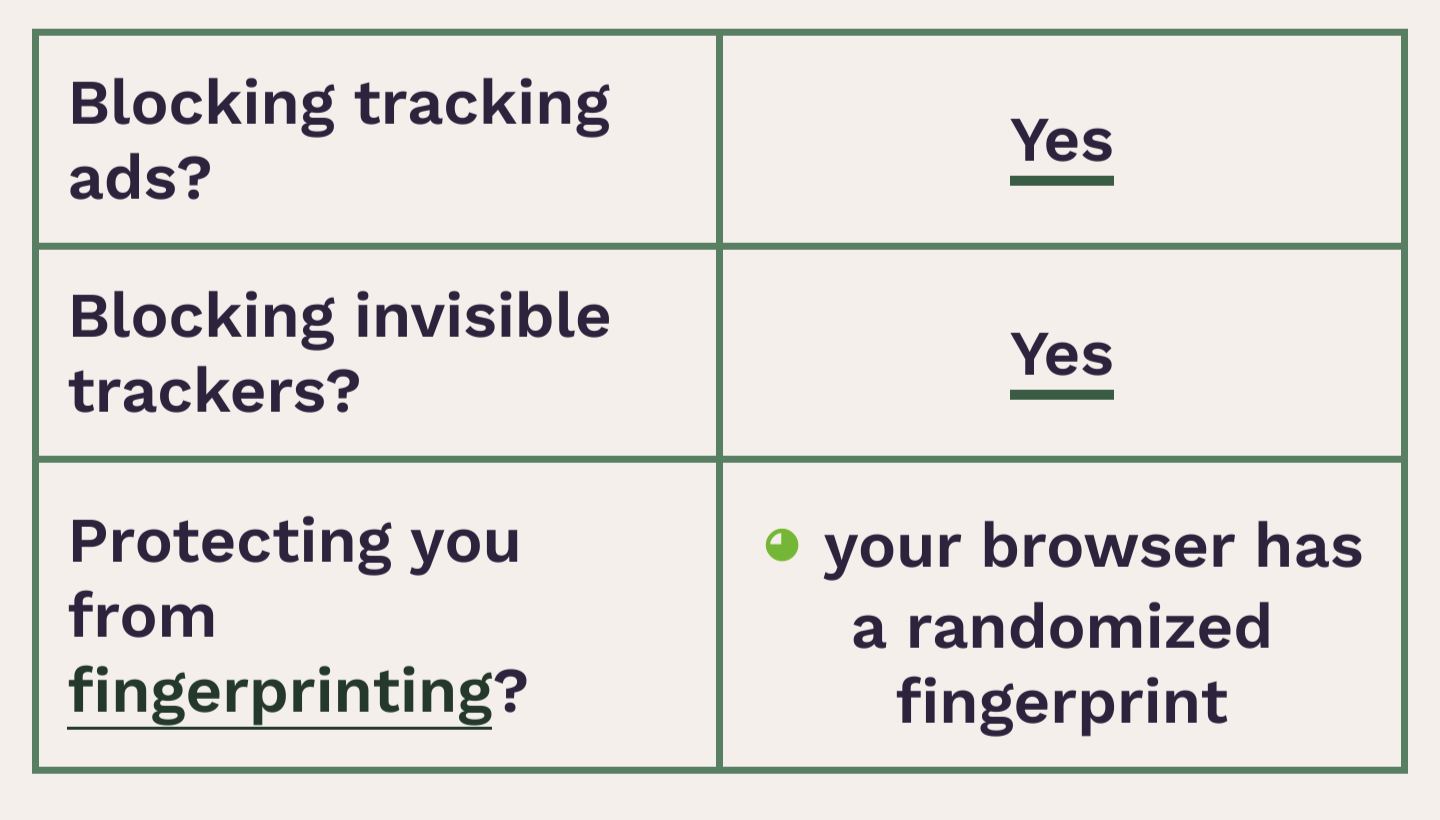What’s the deal? I’m testing using https://coveryourtracks.eff.org/ Is it truly unique (and repeatable), or is it perhaps being randomized on every request?
I’ve tried normal Firefox, Mull, and IronFox. With and without jShelter.
I’m using my phone. Stock Android on a Pixel 7 Pro.
In DDG Browser I have a “nearly unique” fingerprint.
I installed CanvasBlocker and disabled privacy.resistFingerprinting in IronFox (since CanvasBlocker said to), and my fingerprint is still unique. I guess I’m not surprised since I think CanvasBlocker is designed to randomize canvas fingerprinting.
Any tips on having even a shred of privacy when browsing the web on Android?
Update
The biggest identifying characteristics are screen size and user agent. User agent can be faked with an extension. I can’t exactly change my screen size.
I don’t know what exactly what I did, but I managed to improve to “nearly unique” in IronFox. I think all I did was install Cookie Autodelete. It’s an extension I’ve used for a long time in Mull, and finally got around to installing it. Then I installed “User-agent Switcher” and chose a Chrome user-agent and now I’m back to “Unique”. 🤔
EFF mentioned Tor Browser having some other best anti-fingerprinting, so I tried installing that. “Unique Fingerprint”. Again, maybe that’s fine if it means it’s randomized on every request. Does anyone know if that’s the case? If part of the fingerprint is a hash of canvas data and WebGL data, etc. Then I can easily see your fingerprint being unique if a browser or an extension is intentionally fuzzing that data.
Update 2
I tried Fennec with just jShelter, uBlock Origin, and Cookie AutoDelete (not that I think those last two matter).
Obtained a “randomized fingerprint” result. Success?



Why is it so hard to not be fingerprinted. Surly if everyone generated enough noise then it would be impossible?
Thing is most people just don’t care, and don’t understand it. Also, it turns out it’s really easy to fingerprint people. Your list of installed fonts alone is enough to fingerprint you in many cases, and it’s easy to figure out your entire list of installed fonts with JavaScript.
Add a few more data points like screen size and resolution, user-agent, and you can fingerprint 90% of people. And if that’s not enough, every device—even individual video cards of the same model—renders an HTML canvas differently enough that it’s detectable.
It turns out it’s very hard to not be completely unique when you add all the up.
I feel like it should be a crime to do fingerprinting like this, and to grab and store the browsing habits of every citizen for their whole life, but this is America (for me), and it’s never going to change.
Yeah ik how easy it is i wrote an implementation just to see if i could. But i dont see why browsers cant just lie to websites about absolutly everything. Tell the browser u have fonts u dont u dont have those u dont. Fudge ur window size to a standard set. Put noise into webgl renders. Etc etc. The current approach is to make every device look the same i think the better approach is to make every request look completly different all the time.
“Tell a lie once and it’s a lie, tell a lie a thousand times and it’s a fact. And, when you tell a fact, mix it with a lie and people don’t know what’s true.” - Joseph Stalin
If the trackers cant decern the truth from the lie they cant fingerprint.
Because then you get something that doesn’t work on your browser.
I don’t understand the question. What is “noise”?
The reason it’s so hard is because your browser is telegraphing all sorts of information about your computer to the sites you visit. Some of those things are varying degrees of necessary in order for your browser to function. For example, your time zone is needed in order to show you the correct time for events. There are a hundred of these identifiers. And many nerds like you and me are going to have weird display sizes or use weird browsers or disable certain functions, etc.
If you go to deviceinfo.me, it’s basically a mirror that reflects back at you all the information your browser is feeding it.
Funny enough, not sending info at all can also be used to fingerprint you. That’s why the main strategy for anti-fingerprinting in browsers like TOR is to just send all of the most common info in order to blend in.
Also companies started using “Do Not Track” requests to actually track you.
Im saying to mix in random data into all the information u send. If everyone has a slightly weird display size nobody does etc etc.
Yep, I agree. Not seen any tools that can do that though. I believe Safari has some randomization built in. But fuck Apple.